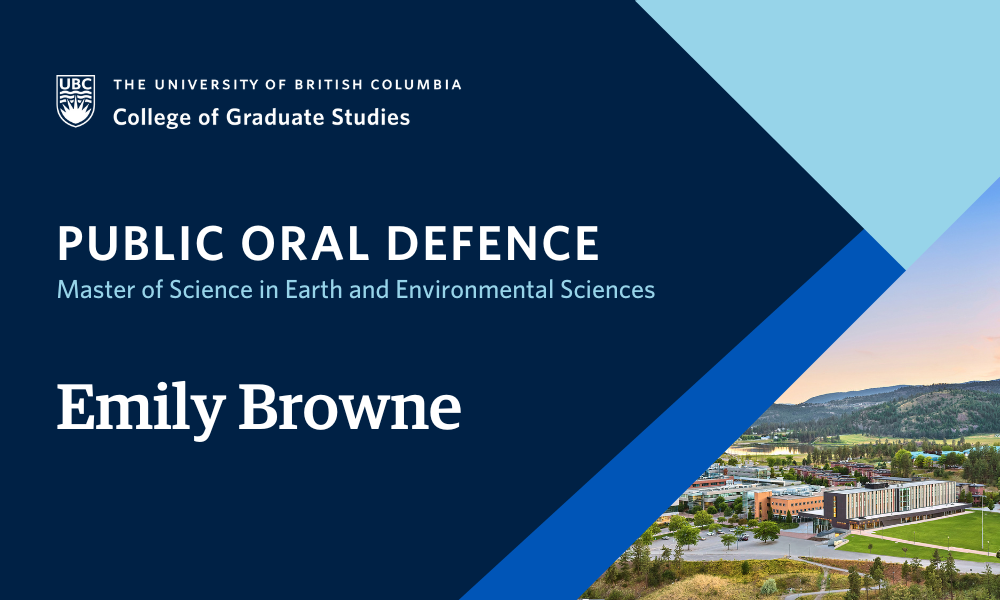
- This event has passed.
Thesis Defence: Methane fluxes in mature upland conifer forests in three biogeoclimatic zones in southern British Columbia
March 25, 2024 at 10:00 am - 2:00 pm

Emily Browne, supervised by Dr. Edward Hornibrook, will defend their thesis titled “Methane fluxes in mature upland conifer forests in three biogeoclimatic zones in southern British Columbia” in partial fulfillment of the requirements for the degree of Master of Science in Earth and Environmental Sciences.
An abstract for Emily Browne’s thesis is included below.
Defences are open to all members of the campus community as well as the general public. Registration is not required for in person defences.
ABSTRACT
Upland forests typically are a sink for atmospheric methane (CH4) because well-drained soils are inhabited by high-affinity methanotrophic bacteria. However, CH4 commonly is generated in trees experiencing heartwood rot caused by fungal pathogens. To date, studies of CH4 emissions associated with heartwood rot have focused primarily on deciduous trees. The objective of this study was to investigate CH4 fluxes in upland conifer forests situated in the Montane Spruce (MS), Engelmann Spruce—Subalpine Fir (ESSF), and Coastal Western Hemlock (CWH) Biogeoclimatic zones of southern British Columbia. The study aimed to determine whether CH4 fluxes in upland forests differ between sites, tree species, trees bearing conks, and other bark anomalies. Trees were surveyed in 10 x 10 m quadrats (n=37) for species, location, diameter at breast height, and evidence of stem fungal infection. A portable gas analyzer and sealed chambers were used to measure CH4 flux from tree stems having a diameter >20 cm, conks resulting from fungal pathogens, stem anomalies, and the soil surface. The flux rate was determined from the change with time of the methane concentration in the chamber headspace. Methane flux was measured from 126 trees and 21 soil plots. Tree species (Picea engelmanii, Abies lasicarpa, Thuja plicata, Tsuga heterophylla, Abies amabilis, Populus balsamifera) from all three sites exhibited both emission and uptake of CH4 with no significant differences between species. Tree stem fluxes were small (MS mean = 0.006 ± 0.059 µmol m-2 h-1, ESSF mean = -0.034 ± 0.057 µmol m-2 h-1, CWH mean = -7.0×10-5 ± 0.046 µmol m-2 h-1) relative to rates of soil uptake of atmospheric CH4 (mean = -2.475 ± 0.801 µmol m-2 h-1). Stem fluxes from conifers at the ESSF site differed from those at the MS and CWH sites likely due to a greater prevalence of conks and fungal infection at ESSF. Bark anomalies and conks did not exhibit higher rates of CH4 flux in contrast to the elevated emissions from similar features on deciduous tree species reported in other studies. Soil was a consistent and larger sink for atmospheric CH4 than tree stems at all three sites and consequently, the mature forest sites collectively were net sinks for CH4.